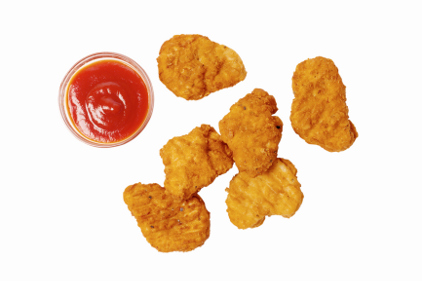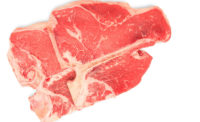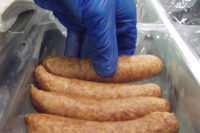Control the wet-bulb temp, control the process
By Lynn Knipe, Ohio State University
Validation of intervention processes is very important to consistently producing safe meat products — other than being a regulatory requirement — and none is more important than the validation of the cooking equipment and process when making ready-to-eat meat products.
At Ohio State University’s Thermal Processing of Ready-to-Eat Meat Products short course this past April, Bob Hanson of HansonTech talked about oven and process validation. For process validation, Hanson emphasized that processors should be most worried about product categories — fast-cooked products such as chicken nuggets, products cooked to low-temperature such as roast beef and dry sausage, and products cooked with dry heat such as patties.

|
The four variables that control the environment surrounding the product during convection cooking include: dry-bulb and wet-bulb temperatures, air velocity and cooking time. Whereas the dry-bulb temperature has traditionally been the focus of many processors during cooking, the wet-bulb temperature is the most important variable to control a cooking process. With steam cooking, the variables that control the cooking environment are the steam temperature and cooking time.
When you’re measuring the wet-bulb temperature, you’re measuring the temperature at which the moisture is evaporating from the product surface. Because moisture is migrating from the center to the surface and evaporating from the surface at the wet-bulb temperature (otherwise known as mass transfer), this evaporation process determines the surface temperature of products during cooking. As such, the surface temperature tracks very close to the wet-bulb temperature during cooking.
In forced-air convection or smokehouse cooking, when you increase the wet-bulb temperature, the surface temperature will quickly increase up to the wet-bulb temperature. However, as the product surface starts to dry, the surface temperature will gradually increase above the wet-bulb temperature. Since the wet-bulb temperature has a strong influence on the surface temperature of meat products, it therefore also affects the core temperature of the product.
For steam cooking, the product’s surface temperature will be very close to the steam temperature throughout the process. A higher steam temperature raises the surface temperature and it cooks faster. To cook more slowly, the steam temperature is lowered.
As the air flows through the product, it becomes cooler. In a smokehouse, the coldest product will typically be found toward the top center of the oven. So, temperature variations in ovens are greater when comparing products on the top to the bottom, versus comparing products from side to side or front to back.
Different types of products tend to have different temperature variations, because the temperature lost through the different types of products is different, due to product shape, as well as surface area to volume ratios. Frankfurters have a large surface-area/lb. ratio, so there is a lot of evaporation from the frankfurters, resulting in a large temperature drop as the air passes through the load. As the product warms up, this temperature difference becomes smaller. In contrast, larger diameter products, such as hams, have a small surface-area/lb. ratio, and so the air has much less temperature drop as it passes through the product.
Most of the variation in an oven is due to variation in the dry-bulb temperature and the air velocity. The wet-bulb temperature is very uniform throughout an oven. There is really no increase or decrease in the wet-bulb temperature as the air flows through the product. The dry-bulb temperature, on the other hand, shows a substantial decrease in temperature as the air flows through the product.
You can use the wet-bulb temperature to your advantage. If you raise the wet-bulb temperature so that it is higher than the target core temperature, it will tend to even out the temperatures in the whole oven. All of the product surfaces will immediately increase to the wet-bulb temperature, and the core temperatures will follow. So, increasing the wet bulb temperature above the targeted endpoint temperature will shorten cooking times and increase yields as well as create more uniform product temperatures throughout an oven.
While the meat industry has focused a lot of attention in the past to dry-bulb temperatures and relative humidity of ovens and smokehouses, the focus should really be on using the right wet-bulb temperature to decrease cooking times, increase lethality, increase yields and control variation.






Report Abusive Comment